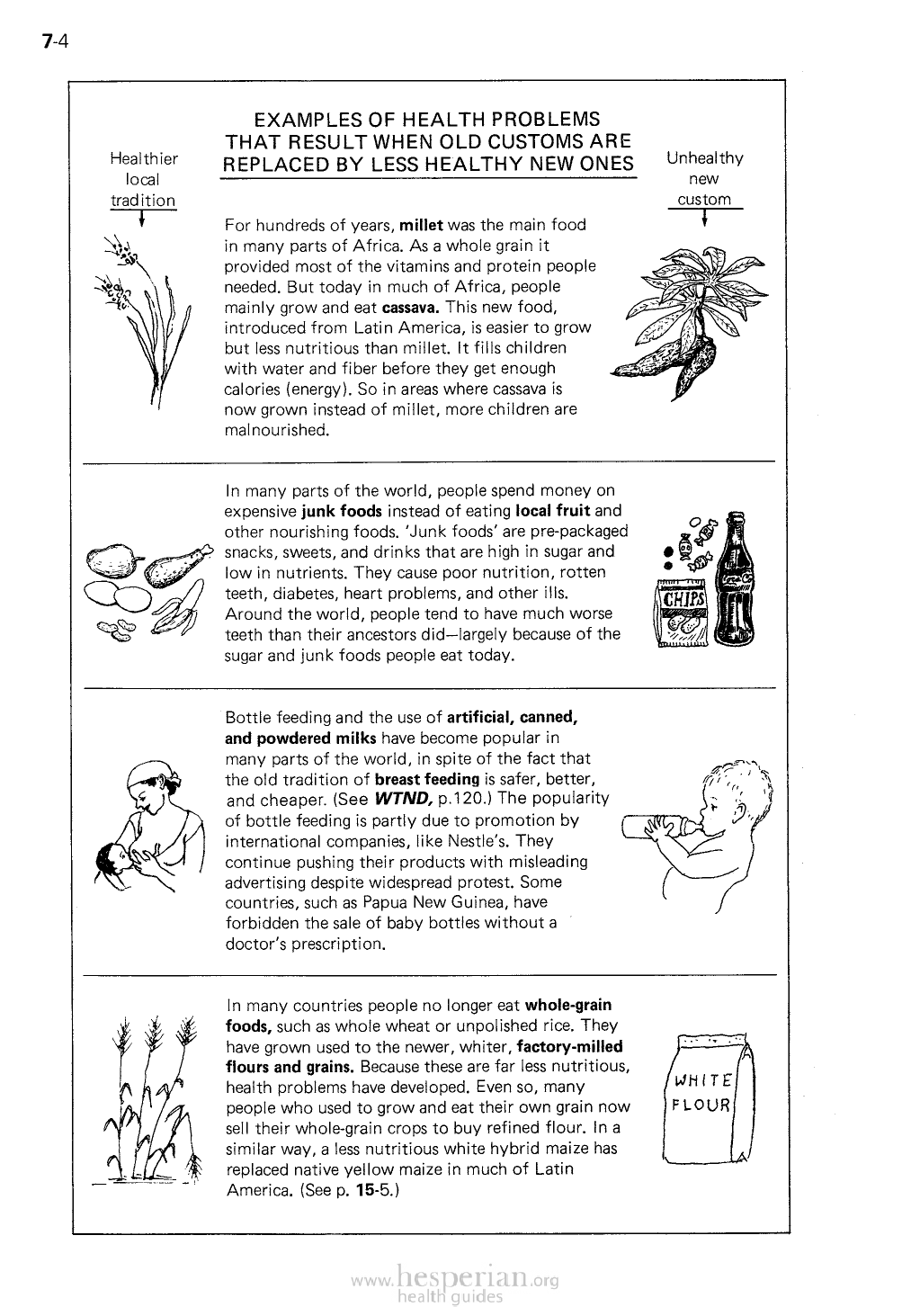
7-4
Heal thier
local
tradition
EXAMPLES OF HEALTH PROBLEMS THAT
RESULT WHEN OLD CUSTOMS ARE
REPLACED BY LESS HEALTHY NEW ONES
For hundreds of years, millet was the main
food in many parts of Africa. As a whole grain it
provided most of the vitamins and protein people
needed. But today in much of Africa, people
mainly grow and eat cassava. This new food,
introduced from Latin America, is easier to grow
but less nutritious than millet. It fills children
with water and fiber before they get enough
calories (energy). So in areas where cassava is
now grown instead of millet, more children are
malnourished.
Unhealthy
new
custom
In many parts of the world, people spend money on
expensive junk foods instead of eating local fruit and
other nourishing foods. ‘Junk foods’ are pre-packaged
snacks, sweets, and drinks that are high in sugar and
low in nutrients. They cause poor nutrition, rotten teeth,
diabetes, heart problems, and other ills. Around the
world, people tend to have much worse teeth than their
ancestors did—largely because of the sugar and junk
foods people eat today.
Bottle feeding and the use of artificial, canned,
and powdered milks have become popular in
many parts of the world, in spite of the fact that
the old tradition of breast feeding is safer, better,
and cheaper. (See WTND, p.120.) The popularity
of bottle feeding is partly due to promotion by
international companies, like Nestle’s. They
continue pushing their products with misleading
advertising despite widespread protest. Some
countries, such as Papua New Guinea, have
forbidden the sale of baby bottles without a
doctor’s prescription.
In many countries people no longer eat whole-grain
foods, such as whole wheat or unpolished rice.
They have grown used to the newer, whiter, factory-
milled flours and grains. Because these are far less
nutritious, health problems have developed. Even so,
many people who used to grow and eat their own
grain now sell their whole-grain crops to buy refined
flour. In a similar way, a less nutritious white hybrid
maize has replaced native yellow maize in much of
Latin America. (See p. 15-5.)